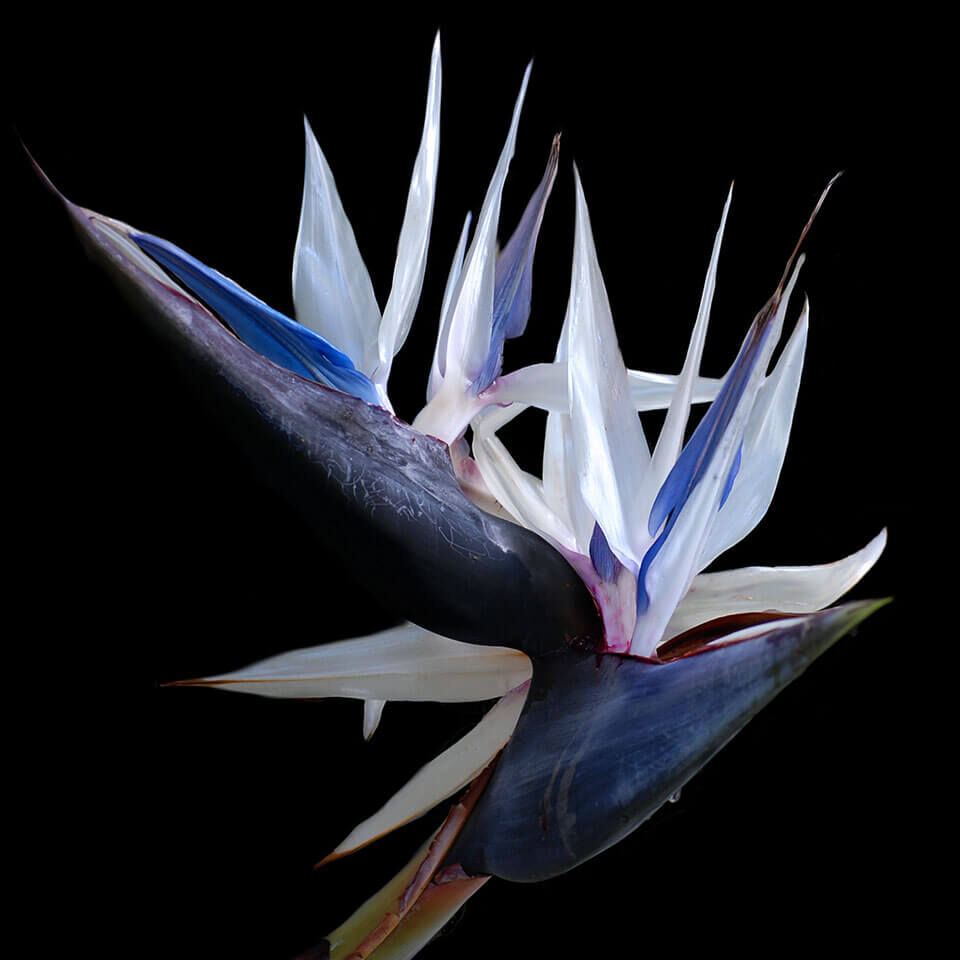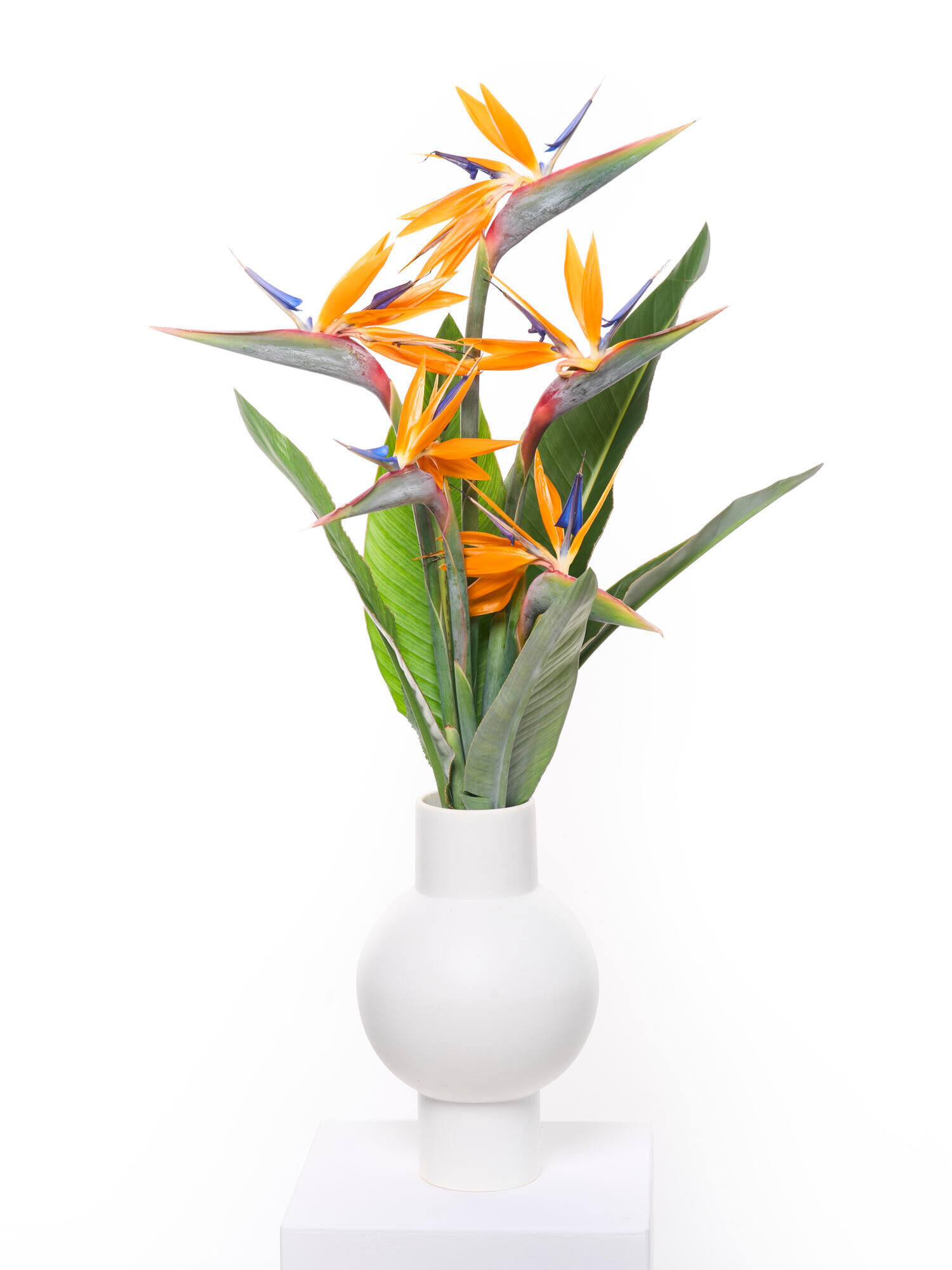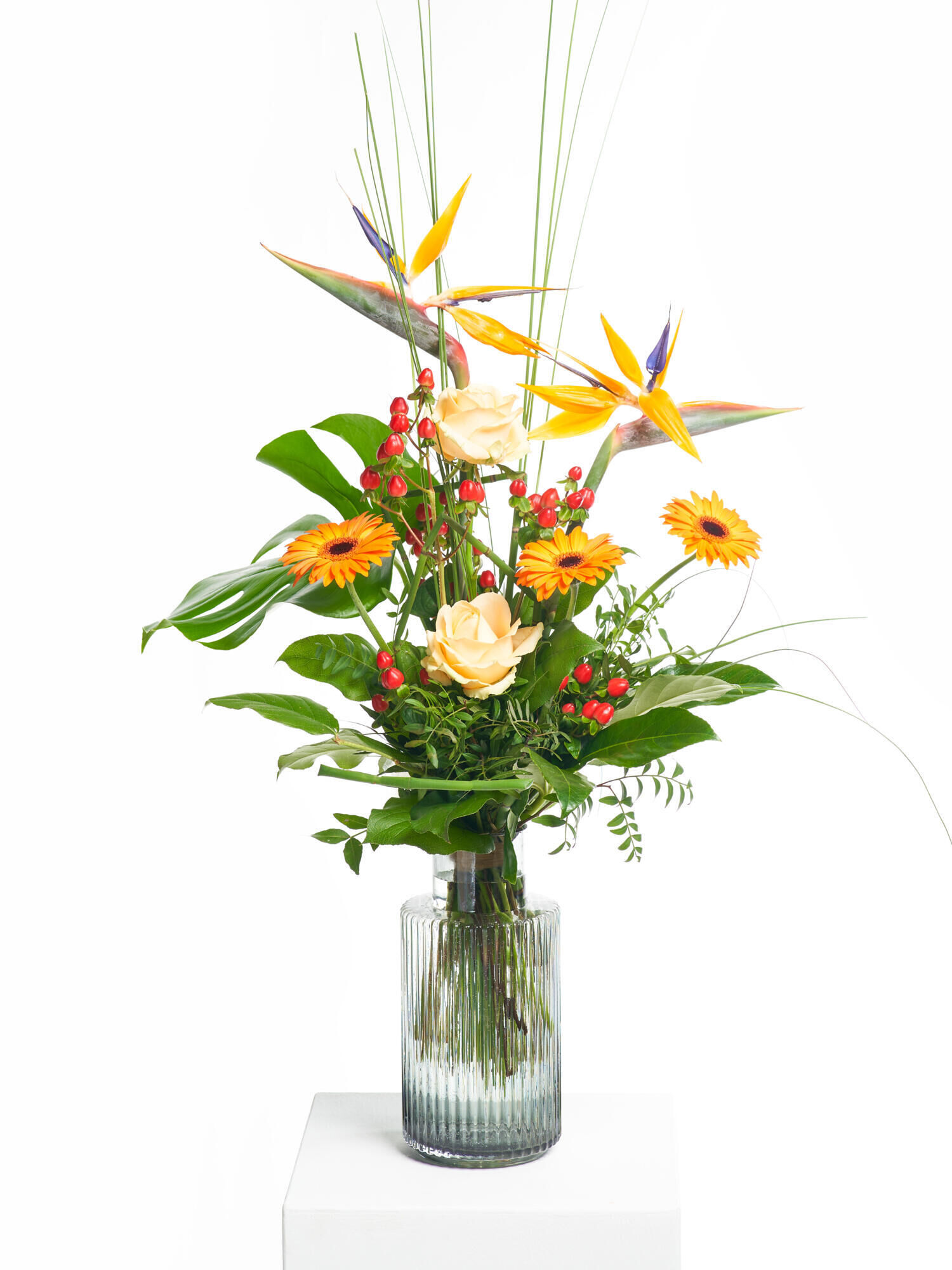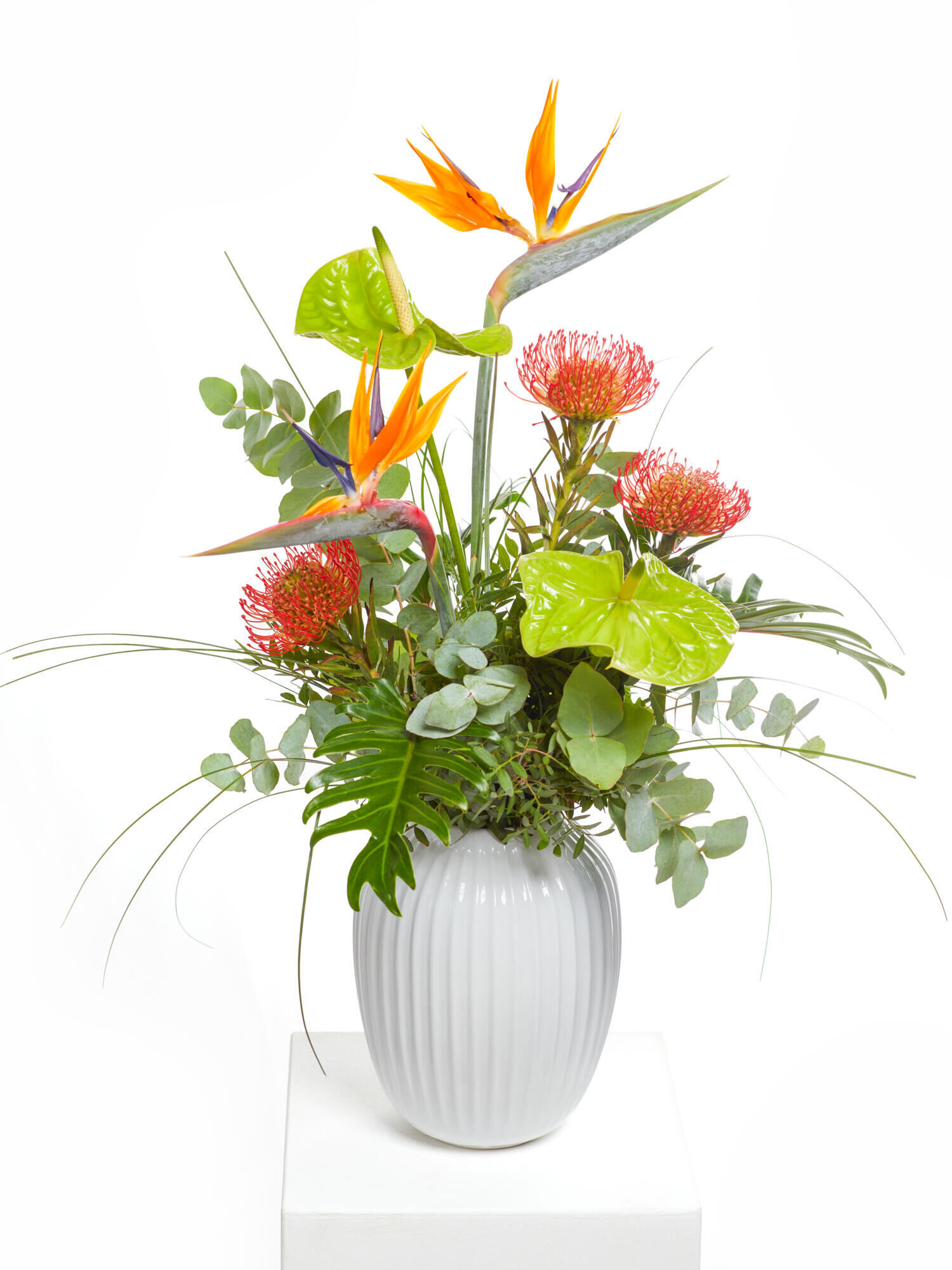Care & plant strelitzias properly

The strelitzia, probably best known is the royal strelitzia (Strelitzia reginae), belongs to the banana family (Musaceae) and attracts attention mainly as a cut flower with an exotic appearance. It is traded as a bird of paradise flower and delights because of its long shelf life and showy bloom. In summer and winter in protected, bright rooms, it also makes a good figure as a tub plant. Below you will learn everything about this special flower, also known as parrot flower, which for many people is an expression of long-distance travel and vacations in distant countries. Therefore, it is often brought back as a souvenir from tropical vacation destinations.
Properties of the Strelitzia
Origin
Strelitzias are native to the Cape regions of South Africa. However, you can also find great outdoor specimens on the Canary Islands and Madeira. It was first reported in 1773 by the English botanist Sir Joseph Banks, who introduced it as a strelitzia. strelitzia. Its name is derived from Queen Sophie Charlotte, born Princess of Mecklenburg-Strelitz. She was the wife of King George III.
Appearance & Growth
The strelitzia is an evergreen, perennial shrub with a rhizome (horst-like growth), short woody stem and upright, broadly lanceolate leaves that stand on stems about one metre high. The leaf axils develop into round flower flower stems develop from the leaf axils, from the ends of which the intensely coloured flowers grow out.
Strelitzias, the parrot flowers, grow to around one to two metres high and are thus among the largest and sturdiest or strongest flower stems, or cut flowers.
Flower & Flowering Time
The most impressive feature of the strelitzia is undoubtedly its extraordinary flower. It consists of striking, colourful flowers that resemble an exotic bird's head. The typical colouring includes bright orange and blue, although the exact colouring can vary depending on the species.
The flowering period of the strelitzia usually extends from spring to summer, although it can also flower in autumn under optimal conditions. In their native country, the tropical regions of South Africa, strelitzias often flower all year round.

Different types of strelitzia
There are a total of five South African tree-like, stemless strelitzia species. Besides the well-known royal strelitzia, there is the tree strelitzia (Strelitzia nicolai), cultivated similar to bananas, tall and later forming stems, the mountain strelitzia (Strelitzia caudata) and the white strelitzia (Strelitzia alba). The smallest and stemless is the rush strelitzia (Strelitzia juncea), which grows with almost no leaf blade and grey-green, round stems reminiscent of rushes.
Care tips for strelitzias as houseplants
Which location does the strelitzia need?
Strelizias prefer a warm, bright and sunny location. In the summer, it can be planted on the patio after it has been slowly acclimatised to the summer sun. Beware of too much wind: the leaves can tear.
Watering & Fertilising
In summer, the strelitzia needs a lot of (low-lime) water and should best be watered in the morning. In summer, it should be fertilised with a liquid fertiliser every four to five weeks.
Strelitzias need to be watered regularly, daily in summer. Caution: If the substrate is too moist, the fleshy roots may rot. In winter, as with all tub plants, the amount of watering and watering intervals should be greatly reduced.
Diseases & Pests
Aphids, whitefly, mealybugs, scale insects, spider mites are known animal pests of these tropical plants. Especially in winter, during the dormant phase, pest infestation can occur due to too dry air and/or too moist substrate.
Planting Strelitzias in the Garden
In principle, strelitzias can be planted in the garden in temperate latitudes. However, strelitzias are not winter-hardy in our latitudes and must be overwintered frost-free, so rather a tub culture is recommended so that the tub plants can be easily and quickly placed in frost-free shelters before the first frosts.
Wintering of Strelitzias
No, in our latitudes strelitzias are not hardy. In this respect, outdoor plants must be protected from the first frosts or better placed in frost-free shelters.
Like other potted plants, strelitzias should be protected from frost and winter cold in the conservatory or a bright, cool and frost-free room.
In summer, i.e. during the main growth phase of the strelitzia, temperatures between 10 and 30° C are necessary. In the dormant phase in winter, the plant needs conditions between 8 and 10 °C.
Strelitzias as unusual cut flowers
The Strelitzie reginae is said to have a velvety, porcelain-like materiality. The noble and precious-looking flower can be used very well for exotic work pieces. Its flowers not only have unusual and intense colours with orange and violet, but the beak-like appearance of the relatively large flowers is also reminiscent of birds of paradise and thus represents a special feature.
Cut strelitzias yourself
Those who own a plant can also cut flowers for the vase. Otherwise, strelitzias are only found in the tropics as a wild plant outside of cultivation.
Combine strelitzes in a bouquet with other flowers
Strelitzias add exotic accents and can be decorated with grass or large green leaves. Florists do not recommend them for colourful bouquets, but rather in single or double positions or with a maximum of six flower stems in a subordinate manner, like with chrysanthemums or hydrangea flowers.
Frequently asked questions about Strelitzia
Yes, strelitzias are quite easy-care, undemanding plants.
Yes, it can be cultivated indoors, in summer it grows very well outdoors as a container plant. It tolerates sun and needs a bright location.
Strictly speaking, the strelitzia is slightly poisonous. The plant parts should therefore not be consumed.
If the strelitzia does not flower in summer, it has not been dormant for the winter. During the dormancy period in winter, the plant should be placed at 8 and 10 °C.
A bright, sunny location is important. Regular watering in summer, fertilising every four to five weeks - this would be sufficient for good care of the strelitzia. In winter, it should be watered little.
If leaves are curling in, check whether too little or too much water has been watered or whether there is a pest infestation.
Repot the plant every 2 to 3 years in a larger pot with fresh, humus-rich soil. In general, the pot should not be much bigger than the previous one.
Only young, vigorous plants should be propagated, preferably by division in spring. If possible, the fleshy roots should not be damaged. If older plants are divided, there is a risk that they will no longer flower every year. Strelitzia seeds are available in the trade, so that the plants can also be sown. However, it takes several years until the strelitzias unfold their first flowers.
















